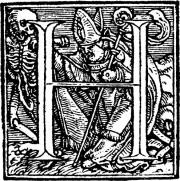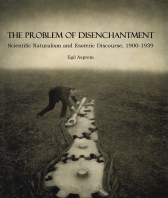 Heresy Corner has a good post on the Templar theme in Anders Behring Breivik’s manifesto. It particularly discusses the author’s ambiguous claim that the whole thing is to be read as “fictional” (scare-quotes in the original). Opening the post with a quote from Umberto Eco’s Foucault’s Pendulum sets the right tone from the start:
Heresy Corner has a good post on the Templar theme in Anders Behring Breivik’s manifesto. It particularly discusses the author’s ambiguous claim that the whole thing is to be read as “fictional” (scare-quotes in the original). Opening the post with a quote from Umberto Eco’s Foucault’s Pendulum sets the right tone from the start:
“The lunatic is all idée fixe, and whatever he comes across confirms his lunacy. You can tell him by the liberties he takes with common sense, by his flashes of inspiration, and by the fact that sooner or later he brings up the Templars.”
But Foucault’s Pendulum is a fitting reference in another way as well, as Breivik’s intended use of fiction reminds one of the process described by Eco, by which fiction becomes fact – at least for some people. In Eco’s novel, the protagonists’ playful invention of an ultra-secret esoteric Order, the Templi Resurgentes Equites Synarchici, or simply Tres, and their big, long-term Plan to establish universal Synarchy, becomes all too serious when it takes on a life of its own in the minds of occultists hungry for secrets and conspiracies.
In the real history of esoteric societies, this is reminiscent of the way the first Rosicrucian orders were created. It all started as a ludibrium in the early 1600s: the invention of a fictional secret order, based on a fictional character (Christian Rosenkreutz), and the printing of spoof manifestos (Fama and Confessio Fraternitatis) – which nevertheless spoke to real issues at the brink of religious war in Europe. About a hundred years later, real groups were emerging, claiming that they were the genuine Rosicrucians. (Ignoring, of course, the warning of the manifestos that no real Rosicrucian will ever admit to being one).Whether or not Johann Valentin Andreae and his circle would approve of the many secret Rosicrucian orders which have later drawn up their mythologies based on the stories of the manifestoes we cannot know, but it is doubtful.
Be that as it may, a similar effect may have been intended by Behring Breivik for his 2083-manifesto, attempting to inspire real-world action through the fictional creation of an extravagant and secret military order of Knights Templar. As mentioned before, Breivik does indeed claim this order to be fictional. But there is ambiguity. Quoting his infamous manifesto once again:
“The motivation for this “fiction-writer-approach” is to contribute to create a new type of innovative writing style. By defining, in a horrifically detailed way, a fictional scenario, the reader will be shocked due to the “hopefully” credible and extremely detailed elaborations. … [T]he book was created to try to explain to the European political elites how the continuation of given political doctrines could result in similar manifestations (radicalisation of certain groups/individuals), as history has already proven, if they continue with their current policies. As such, it is a reminder to the current establishment what might happen if they repeat the mistakes of the past…. All ”threats” etc in these fictional books are ”in character” and its primary goal is to give an impression of what it would be like if we were under threat by an extremist organisation. … [A]ll incriminatory information in this work is written “in character” and must not be confused with an actual plan, or strategy to attempt to harm any individuals or infrastructure, any political groups or attempt to seize political or military control of Western European regimes…”
It would be wise, therefore, to see most of what comes from Behring Breivik’s pen and mouth, also (and especially) during the trials ahead, as prescriptive rather than descriptive statements. In this respect, his Templar dreams are as much part of his ideology – as motivational fiction, utopian literature, or blueprints of revolution – as any of his paranoid Eurabian fantasies and anti-Marxist rants.
![]()
This blog post by Egil Asprem was first published on Heterodoxology. It is licensed under a Creative Commons Attribution-ShareAlike 3.0 Unported License.






[…] there is a performative aspect to Breivik’s attacks is without doubt. It is mythologised and fictionalised through the narrative of a secret Templar terrorist organization drawn up in the manifesto. The trial ensuing after getting caught alive is even described as a […]
[…] mentions anthroposophy in passing, but it’s worth reading. A bit later he posted a second post on the topic, referring to a post over at Heresy Corner; check out both. (By the way, when reading […]
This is an interesting example of the organizational methodologies outlined in Starfish & the Spider, a book by 2 Stanford MBA’s, Ori Brafman and Rod Beckstrom, on the creation and management of “leaderless” organizations.
They briefly touch on terrorism, the Al Qaeda methodology runs on a similar mechanisms as detailed in Marc Sageman’s book Leaderless Jihad.
In both cases they present this as a 21st century manifestation, but as you point out the Rosicrucian manifestos, and ensuing cultural effect, are very similar in form. Basically it simply requires a strong ideology built with enough symbolism and philosophic generalities to allow splinter groups to take over the narrative in real time.
Thanks for this reference, David, that’s very interesting. I was not aware of this work.
[…] Pluralism in 20th-Century Europe”. The invitation was inspired by some of the things I wrote on this blog concerning Behring Breivik and religion last summer, and my role would be to compose a […]
[…] to be a playful ludibrium – although no doubt one that expressed deep convictions. This dynamic of fiction turning to fact is itself perhaps nowhere better explored than in Umberto Eco’s work of […]
[…] people started forming their own Rosicrucian Orders, and the story of the secret society was stepping out of the realm of fiction and into the realm of fact. By now such societies are counted by the dozens. (At least – I haven’t actually […]